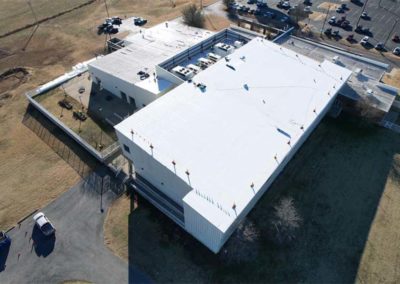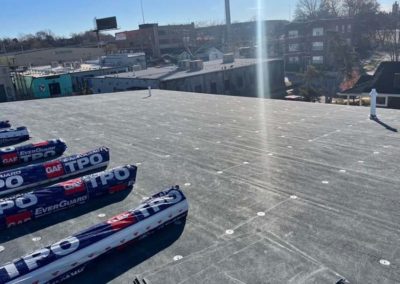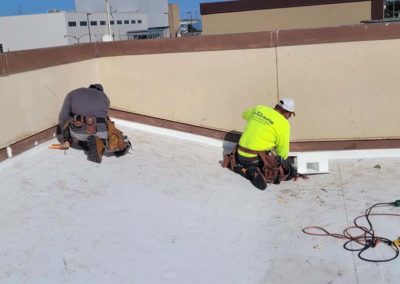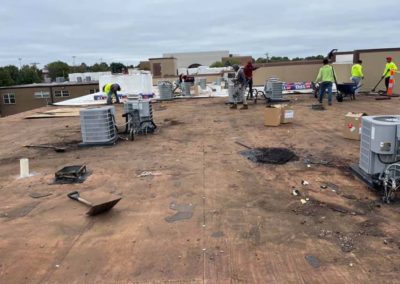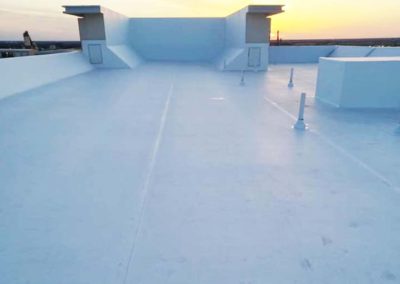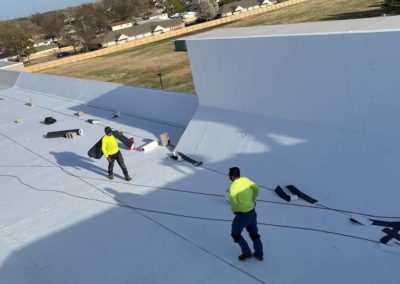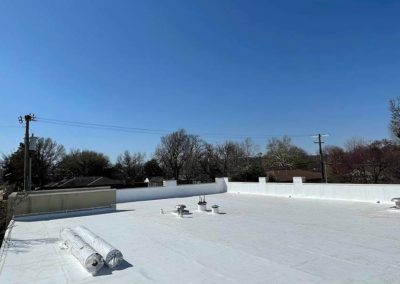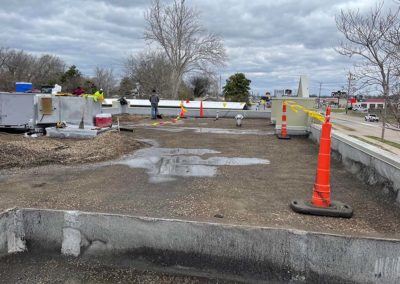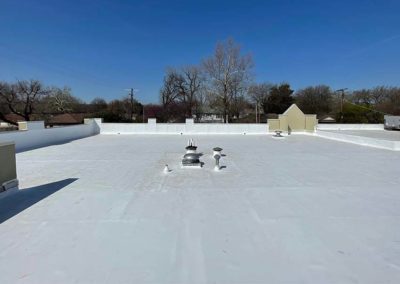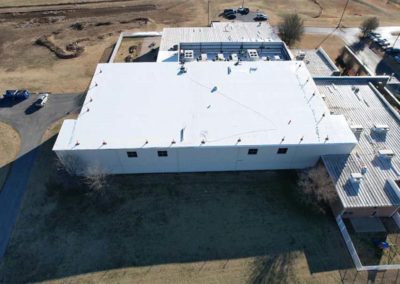TPO vs. EPDM Roofing
Membrane Roofing Systems
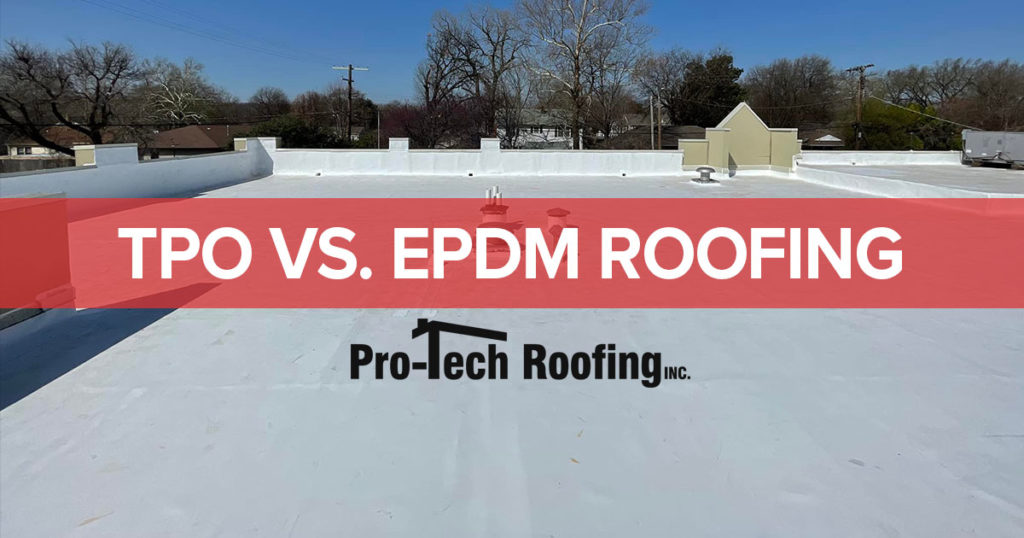 Let’s take a look at the difference between TPO and EPDM roofing systems.
Let’s take a look at the difference between TPO and EPDM roofing systems.
Both of these abbreviations are types of popular roofing systems for a variety of commercial buildings. From churches to condos to retail stores, low-slope or flat facilities can be converted or built with a TPO roof or EPDM roof.
If you’re trying to decide on a roofing system, you’re likely looking for something that will give you fewer headaches over the years.
In this post… we’ll cover how these systems work, what building owners and managers should take into consideration, and whether one might be a better choice for you.
As always, if you need help with your roof, reach out to us.
The Basics of Membrane Roofing Systems
A membrane roofing system, like EPDM or TPO, is one that’s been engineered for flat or low-slope roofs, usually installed on commercial buildings.
Both are durable and cost-effective roof options for your commercial building, but one may have certain benefits for your specific application.
And both TPO and EPDM can be installed faster than commercial metal roofing, which can save you a bundle on labor costs.
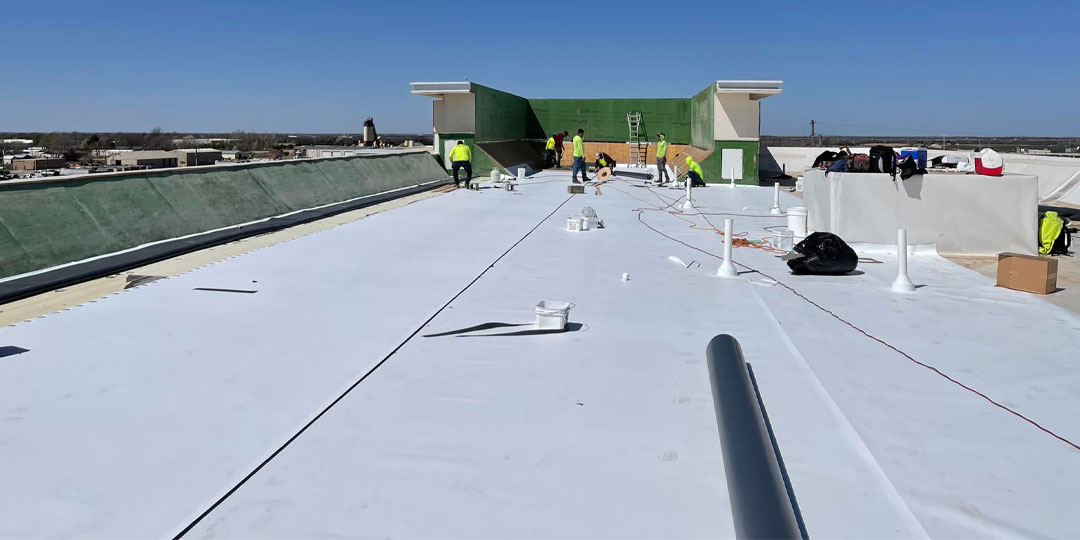
NEED HELP? CALL PRO-TECH ›› (918) 250-7663
What is TPO Roofing?
What does TPO roofing stand for? TPO stands for Thermoplastic Polyolefin.
TPO is a single-ply roofing membrane used on low-slope or flat roofs.
A relatively new player to the market, TPO holds the largest market share among single-ply membrane roofing systems.
While the TPO membrane is thin, it’s supported by a solid substrate that’s usually designed as an insulation system.
The membrane comes in a variety of thickness options, often 40-mil, 60-mil or 80-mil thickness.
The roof membrane for TPO consists of three layers:
- TPO Top Layer – UV blockers/abrasion-resistant compounds
- TPO Middle Layer – Polyester mesh for strength and structure
- TPO Base Layer: Flexibility/adhesion compounds
TPO manufacturers also offer a fleece-backed membrane.
The membrane is usually attached to the roof with the help of fasteners, adhesives and/or heat welding.
The result is a thoroughly sealed roof that resists mildew and impact damage.
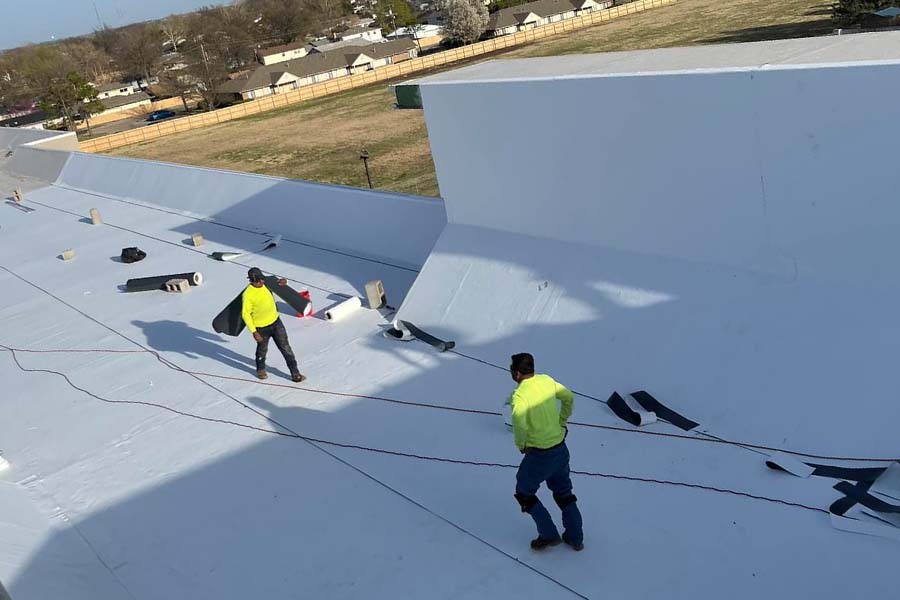
What is EPDM Roofing?
What does EPDM roofing stand for? EPDM stands for Ethylene Polypropylene Diene Monomer.
Like TPO, it’s a single-membrane system that is also composed of three distinct layers.
- EPDM Top Layer: Fiber-reinforced polyester
- EPDM Middle Layer: Fire retardant
- EPDM Base Layer: Elastomeric
There’s also an optional white layer that can be placed over the top to reflect heat.
Sometimes called a rubber roof, EPDM roofing is further reinforced with fiberglass and polyethylene.
The membrane for the EPDM roof is made in a long, wide sheet.
The most common thicknesses are 45, 60, and 90 mils.
As with TPO, the thicker the membrane, the more durable it will be against weather events.
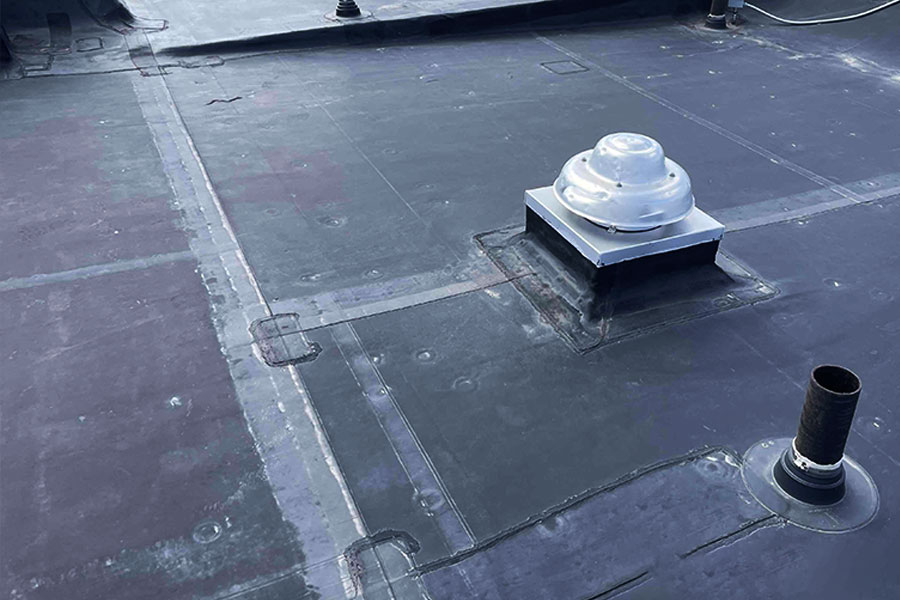
How are TPO and EPDM Roofs Made?
At a basic level, a TPO roofing membrane is made from plastic, while an EPDM roof is made from rubber.
With TPO, the polymer materials have been adjusted to give your roof maximum impact resistance, tensile strength and UV resistance.
TPO is pliable and easily worked with during installation.
The result is a roof that can resist some of the most destructive elements.
With EPDM, compounding agents and materials can be manipulated to resist everything from high temperatures to heavy hail.
The Benefits of TPO Roofing
TPO offers a range of benefits to property owners. Here are a few benefits of TPO roofing:
- Puncture Resistance – TPO offers great puncture resistance over some other types of roofing materials. The materials underneath the membrane can affect the level of puncture resistance.
- Energy Efficiency – With TPO, you get a white, reflective roof surface that can help save energy costs, when compared to dark EPDM.
- Lifetime Value – TPO is one of the most cost-effective roofing systems available. TPO installation is low-cost. Repairs to your flat roof can be made relatively simply as well.
- Resists Shrinkage – TPO is a stable membrane and is not prone to shrinkage. This helps seams and edges remain intact.
- Monolithic Membrane – Welded seams create a single barrier that covers the entire roof
The Benefits of EPDM Roofing
EPDM offers some similar and some different benefits. Here are a few benefits of EPDM roofing:
- Fast Installation – EPDM arrives on the jobsite in large rolls for quick installation. This benefit is shared with TPO.
- Cost-effective Repairs – Some punctures or damage can be easily repaired in most cases.
- Durability – EPDM can resist a range of damage risks, and a ballasted EPDM adds even more durability.
- Energy Efficiency – White EPDM can provide energy savings, and black EPDM may be preferred in northern climates.
- Long Lifespan – EPDM is widely recognized for its longevity. Some building owners get a service life of 25 years or more.
Replace Your Roof With a Single-Ply Membrane
If you have a flat or low-slope roof that needs to be replaced, you will want to consider your options with a membrane roof. There is good reason these roofing systems are so popular. Reach out to Pro-Tech Roofing to discuss your project.
Pro-Tech Roofing services all of northeast Oklahoma, including the communities: Tulsa, Bartlesville, Bixby, Broken Arrow, Jenks, Catoosa, Coweta, Claremore, Collinsville, Glenpool, Grand Lake, Inola, Mounds, Muskogee, Oologah, Owasso, Pryor, Skiatook, Sand Springs, Sapulpa, Tahlequah and Wagoner.
View a more complete gallery of Oklahoma roofing projects.
If you like this post…
And have think it would be helpful to your audience, please give us a share on social media ››››
If you are in or around Tulsa, Oklahoma and need roofing services, give us a call at (918) 250-7663 or contact us here.

